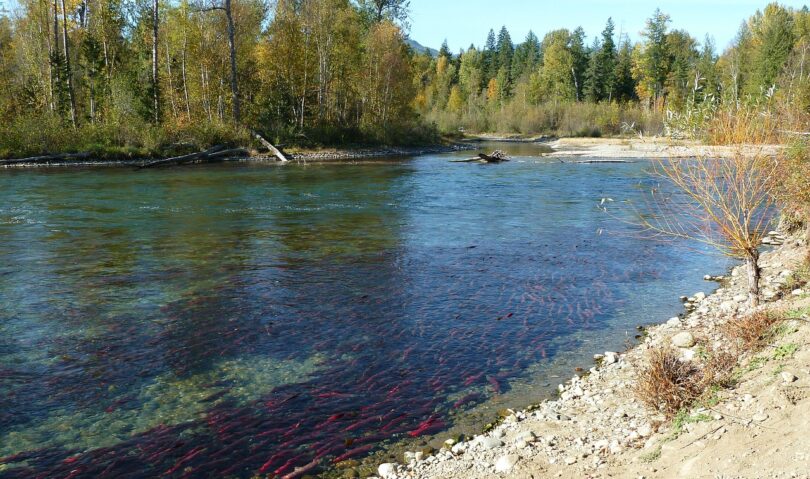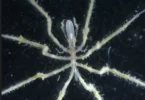Salmon are known for their incredible life cycle, which could easily be called an odyssey. These fish undergo a remarkable transformation, navigating both freshwater and saltwater environments, braving many obstacles, and following instincts that guide them through one of nature’s most fascinating migration stories. But what exactly is the life cycle of a salmon, and what makes their journey so extraordinary?
Let’s dive into the stages of the salmon’s life cycle, from the freshwater streams where they begin life to the vast ocean where they thrive.
Stage 1: The Birth – Eggs in Freshwater
The journey begins in the cool, clear waters of freshwater rivers and streams. Female salmon lay their eggs, often in gravel nests called “redds,” where the eggs will remain until they hatch. The eggs are fertilized by the male salmon, who releases his sperm over them. These eggs are delicate and require clean, oxygen-rich water to survive. Depending on the species, salmon eggs can take several months to hatch, typically in the winter or early spring.
Once hatched, the tiny salmon are called alevins. At this stage, they are still dependent on the yolk sac for nourishment and are vulnerable to predators.
Stage 2: The Fry – A Growing Survivor
After a few weeks, the alevins transform into fry, a stage where they begin to look like miniature versions of adult salmon. During this phase, the fry begin to venture out from their gravel nests and swim in the stream. Their primary focus is on feeding and growing stronger to survive. They will eat insects, plankton, and small invertebrates found in the water.
As the fry grow and adapt to life in the freshwater, they develop the necessary skills to migrate. This phase can last anywhere from a few weeks to several months, depending on the species and environmental conditions.
Stage 3: Parr – The Freshwater Adventurer
The next stage in the salmon’s life is the parr stage. The parr are now small fish that sport dark vertical markings on their sides, which help them blend into their environment. This camouflage protects them from predators as they continue to grow in freshwater. During this time, they learn essential survival skills and prepare for the next big step of their life cycle—migration to the ocean.
Salmon at this stage are very adaptable, learning to find food in their freshwater habitats while avoiding predators. They can remain in this stage for up to two years, depending on the species and local conditions.
Stage 4: Smolt – Transitioning to Saltwater
The next big transformation occurs when the salmon enter the smolt stage. This is where the freshwater fish start adapting to the salty ocean water. The smolts undergo several changes that allow them to thrive in saltwater: their gills, kidneys, and scales adjust to handle the higher salinity levels, and they undergo a physical transformation to help them swim more efficiently in the open ocean.
Around this time, salmon begin their long migration toward the sea, which can be thousands of miles. This migration is often dangerous, with many salmon facing predators, changes in water temperature, and food shortages.
Stage 5: The Ocean – The Salmon’s Deep Sea Adventure
Once the salmon reach the ocean, they enter the adult phase of their life cycle. The ocean offers abundant food, and the salmon grow rapidly, building up strength for their eventual return to their birthplace. During this time, they can travel vast distances across the ocean, sometimes swimming from one continent to another.
Salmon in the ocean feed on fish, squid, and other marine organisms, constantly growing and building their strength. The ocean phase can last from one to several years, depending on the species. This phase is both an exciting and challenging time for the salmon, as they need to stay safe from predators like seals, whales, and larger fish.
Stage 6: The Return – Migrating Back to Freshwater
The most iconic part of the salmon life cycle happens when they begin their return journey to freshwater. After spending years in the ocean, salmon instinctively swim back to the exact stream where they were born. This migration can span hundreds or even thousands of miles, and the journey is fraught with peril, from obstacles like waterfalls to predators lying in wait.
Salmon return to freshwater in late summer or fall, navigating through dangerous waters and overcoming obstacles that would be impossible for many other animals to conquer. Their determination is awe-inspiring, as they push through their fatigue and exhaustion, driven by an innate need to reproduce.
Stage 7: The End and Rebirth – Spawning and Death
Once they reach their spawning grounds, adult salmon lay their eggs in the gravel beds, ensuring the next generation of salmon will begin their journey. After spawning, most salmon species die. Their bodies decompose in the stream, providing nutrients that help new life grow. The circle of life continues.
Interestingly, some species of salmon, like the sockeye, can live to spawn again, but many die shortly after completing their journey. Their sacrifice ensures the continuation of their species and replenishes the ecosystem with nutrients that benefit other wildlife.
The life cycle of a salmon is a testament to resilience, determination, and nature’s incredible ability to adapt. From tiny eggs in the cold waters of freshwater streams to long journeys across the ocean and back, salmon face many challenges, each more daunting than the last. Their incredible life cycle is not only fascinating but also crucial to the health of ecosystems and fisheries.
By understanding the salmon’s life cycle, we can better appreciate the complex relationships between the creatures of our oceans, rivers, and lakes, and why preserving these habitats is so important.









